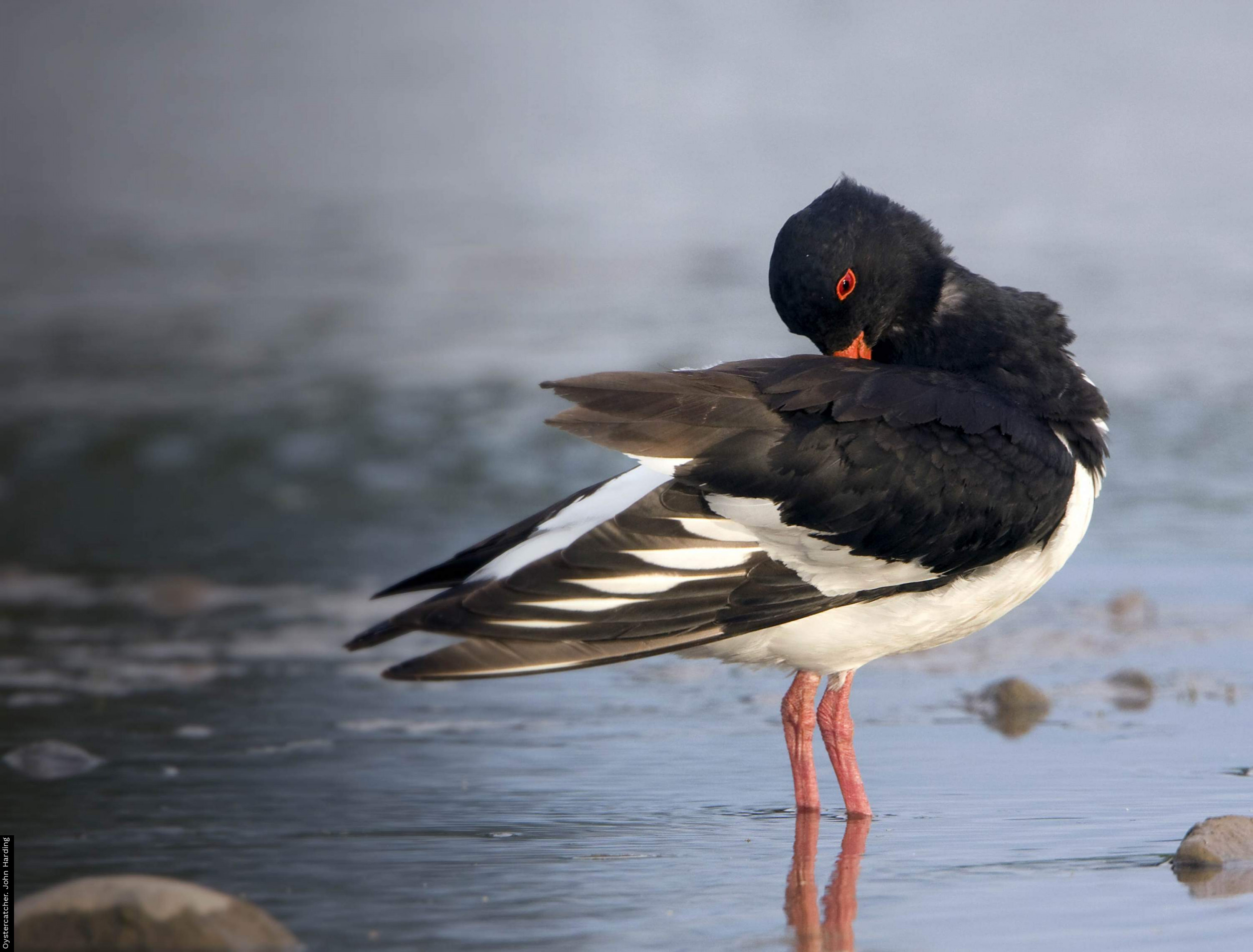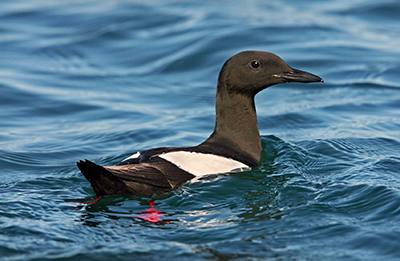Black Guillemot nest boxes
BTO has been working with 'Action for Biodiversity', and Ards Borough Council, on an Interreg funded project to build and deploy 80 new Black Guillemot nest boxes in the local authority areas of North Down and Ards.
40 of these boxes are being deployed in Bangor Marina. Black Guillemots began nesting in the old North Pier at Bangor in 1911, using small crevices in the decaying wood and concrete structure (Workman 1914).
In the mid-20th century, the breeding population of Black Guillemots probably numbered no more than half a dozen pairs, as judged by Nest Record Card submissions to the British Trust for Ornithology, with birds nesting in the two main piers.
The colony has met with some trials over the years and in 1987 the old Bangor piers were demolished and a new marina built. Thanks to Julian Greenwood who has studied the Bangor birds for nearly 30 years, and sympathetic architects and builders, the young birds were allowed to fledge and 27 new concrete nesting crevices created.
This allowed an immediate increase in numbers. Now, nearly a century after they started to breed in Bangor, there are more than 30 pairs nesting in the marina annually.
The main limiting factor for these birds, as at all of their breeding sites, seems to be safe, secure nesting places. Black Guillemots nest in burrows or crevices but have also been shown to take readily to wooden nest boxes at Copeland Bird Observatory and on Strangford Lough – hence the idea for this project.
Julian Greenwood’s studies at Bangor have been the most detailed anywhere in the UK for the last 25 years. In Bangor, 76% of all clutches completed since 1985 contained two eggs, a figure somewhat similar to the 80% found in Shetland (Ewins 1989).
The second egg is laid three days after the first; incubation begins after clutch completion and lasts for 30 days, the two young commonly hatching just one day apart (Greenwood 1998). Chicks remain in the nesting chamber until they are heavier than their parents, often weighing over 450g at fledging. Butterfish Centronotus gunnellus are the commonest food which the parents catch. On average young birds leave when about 40 days old.
Black Guillemots are different to other local Auk species as they usually lay 2 eggs. Losses of eggs and young are inevitable. It is clear that during the incubation period some adults desert for no apparent reason.
Once eggs have hatched, losses can be due to predation. Brown Rats Rattus norvegicus have been suspected of killing some young but it is Herring Gull Larus argentatus predation that has been observed. Gulls have been seen on a few occasions pulling both sitting adults and young from nesting holes.
In the 563 breeding attempts between 1985 and 2009, 995 eggs were laid, 615 eggs have hatched and 557 young have fledged, i.e. about one young has been fledged per pair in the entire marina. The highest success, for instance, has been on the North Pier, with 1.3 young fledged per pair.
Greenwood, J G 1998 Breeding biology of Black Guillemots Cepphus grylle at Bangor, Co. Down. Irish Birds 6: 191-200
Ewins, P J 1985 Colony attendance and censusing of Black Guillemots Cepphus grylle in Shetland. Bird Study 32: 176-185
Workman, W H 1914 Peculiar nesting site of Black Guillemot. The Irish Naturalist 23:23







Share this page